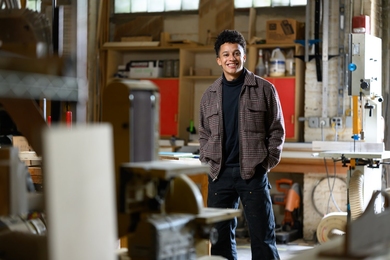Imagine a future where tiny systems much smaller than the head of a pin help monitor our water supply for pollutants and, if such pollutants are detected, remove them. Engineering nanoparticles for environmental applications such as this is one of the research projects to be tackled by the MIT-International Iberian Nanotechnology Laboratory, a new collaboration formally launched on May 30.
"This program will bring together researchers in materials, devices, circuits and systems. Such an interdisciplinary approach will allow the realization of fully self-powered microsystems that demonstrate unprecedented levels of performance ... and power in a variety of emerging applications such as biomedical devices, detection of toxins in water, and food quality control," said Anantha P. Chandrakasan, MIT's inaugural director of the MIT-INL. Chandrakasan, the Joseph F. and Nancy P. Keithley Professor of Electrical Engineering, is also director of MIT's Microsystems Technology Laboratories.
Other projects to be enabled through the collaboration, which Chandrakasan emphasizes will explore not only nanomaterials and devices but also how to integrate them in systems, include:
- Creating new microsystems based on graphene, a form of the element carbon that is just a single atom thick. The material's unique physical properties - for example, it has a very high electron mobility, a measure of how easily electrons can flow within it - could allow advanced sensors for the detection of single molecules of pollutants and more.
- Coaxing nanoparticles or biomolecules to self-assemble into complex nanostructured devices with precisely tailored chemical or biological responses. Key to this particular work: engineered templates to guide the process.
- Developing ways to process and package lead zirconate titanate (PZT), a material that could allow nanodevices to harvest minute sources of energy from their environment. Such devices could then power themselves.
A version of this article appeared in MIT Tech Talk on June 3, 2009 (download PDF).





